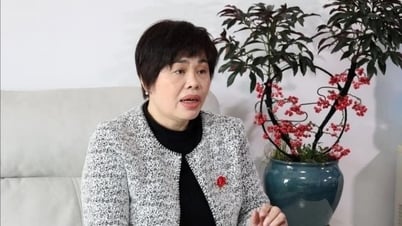On June 21, the Japanese government approved a new policy plan focusing on raising wages and expanding the economy 's growth potential, in the hope that the country is on track to escape deflation and move into a "new phase".
 |
| The Japanese government sees the current period until 2030 as the “last chance” to reverse the declining birth rate. |
The new plan, approved by Prime Minister Fumio Kishida's Cabinet, assessed that the economy remained fragile, especially private consumption, and said the government should closely monitor the impact of a weak yen on rising import costs.
The Japanese government is sticking to its current fiscal recovery targets and is not setting a more ambitious target, despite the risk that higher debt costs will limit future government spending.
The new policy plan is also consistent with the Bank of Japan's gradual shift toward normalizing monetary policy by raising interest rates and reducing purchases of government bonds.
The plan states that the Japanese government will ensure income growth is faster than inflation. To maintain growth momentum from 2025, the government will deploy all policy tools to support wage increases.
The Japanese government has also implemented a series of support measures such as reducing income and residence taxes by 40,000 yen ($250) per person, as well as reducing energy bills.
A pressing issue for Japan is its rapidly aging population and how to cope with a population decline that is expected to accelerate in the coming decades. Prime Minister Kishida’s government sees the current period until 2030 as the “last chance” to reverse the trend of declining birthrates. The government has determined that the economy needs to grow by more than 1% after 2030 to manage its finances and continue to provide social security services, despite the demographic challenges.
After years of focusing on providing emergency support to help the economy weather the shocks of the Covid-19 pandemic and rising living costs, the government has stressed the need to rein in spending and restore the nation’s finances, which are among the worst in the developed world.
To grow the economy in the long term, the Japanese government will promote digitalization and automation, invest in key areas such as green technology and semiconductors to ensure national security, and push for further labor reforms, including encouraging the search for new job opportunities with higher wages.
The policy plan promises to support “large-scale, multi-year” investment to boost output and research and development in artificial intelligence and chips. Japan will consider legislative steps to support mass production of next-generation semiconductor chips.
Source: https://baoquocte.vn/nhat-ban-phe-duyet-ke-hoach-chinh-sach-moi-quyet-nam-co-hoi-cuoi-cung-dua-nen-kinh-te-thoat-khoi-quy-dao-suy-giam-275883.html





![[Photo] Prime Minister Pham Minh Chinh and Prime Minister of the Kingdom of Thailand Paetongtarn Shinawatra attend the Vietnam-Thailand Business Forum 2025](https://vphoto.vietnam.vn/thumb/1200x675/vietnam/resource/IMAGE/2025/5/16/1cdfce54d25c48a68ae6fb9204f2171a)































![[Photo] President Luong Cuong receives Prime Minister of the Kingdom of Thailand Paetongtarn Shinawatra](https://vphoto.vietnam.vn/thumb/1200x675/vietnam/resource/IMAGE/2025/5/16/52c73b27198a4e12bd6a903d1c218846)





























































Comment (0)